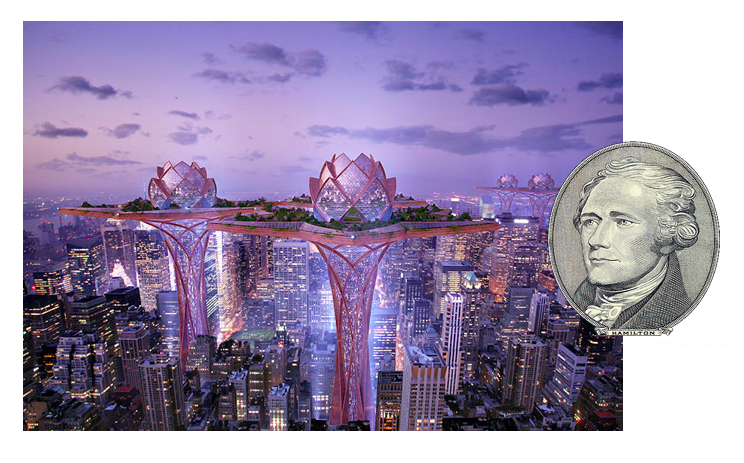Guess what country is not represented on this roster? You got it--right here.
News, commentary, and yes, outright speculation on what Alexander Hamilton might be thinking about today--if he were still alive at age 258--as seen by Jim Pinkerton.

Thursday, October 31, 2013
Tuesday, October 15, 2013
Wall Street Journal headline: "A Slowdown on the Road to Recovery Decaying Bridges, Highways Raise Costs for Truckers, Manufacturers"
As The Wall Street Journal reports, "One in nine of the country's 607,380 bridges is structurally deficient and 42% of the country's major urban highways are congested, according to an American Society of Civil Engineers estimate, the result of years of inadequate funding and deferred maintenance."
Those numbers might seem like abstractions, but the chart above shows how slow things can get; in "freight-significant" highways in the Chicago area, for example, average speeds at peak periods are around 22 mph.
And so, as the Journal's Bob Tita notes, decaying infrastructure has real-world, bottom-line, consequences for American business and the American economy:
Trucks ship the bulk of the country's goods. But trucking companies and their customers complain those shipments are being rerouted—sometimes by hundreds of miles—or traveling at lower speeds over deteriorating or traffic-clogged highways. That causes higher costs for fuel, maintenance and other expenses, including drivers.
In some cases, the higher transportation costs end up on consumers. "We try to price our products to what our costs are," said Donald Maier, senior vice president of global operations for Lancaster, Pa.-based Armstrong World Industries, Inc., which makes floor and ceiling tiles.
He said fully loaded truck trailers traveling to or from its Marietta, Pa., ceiling tile plant will have to use a 25-mile detour, mostly to avoid a two-lane state highway bridge over a tributary of the Susquehanna River that will no longer be rated to accommodate fully loaded heavy-duty trucks.
Armstrong projects the additional miles will add about $200,000 to $300,000 a year to the Marietta plant's transportation costs.
The Journal report continues:
This important news story ought to be worth a Wall Street Journal editorial, too.
The U.S. hasn't raised the federal fuel tax for 20 years and many states also have been reluctant to raise taxes on fuel or vehicle registration fees, prompting drastic tactics to manage stretched funds.
"One thing we don't factor in our investments is a decline in state-owned transportation infrastructure, but it could become a huge issue," said Dave Strobel, senior vice president of global operations for Carpenter Technology Corp., a Wyomissing, Pa., maker of alloys and metals for aerospace, energy and medical industries.
The company has six plants spread across Pennsylvania, where one in four bridges is structurally deficient—the highest in the nation. The state Department of Transportation recently lowered weight limits on more than 1,000 bridges dotting the state to reduce wear and extend their service. As a result those bridges could be off-limits to big trucks and trailers.
Mr. Strobel is concerned the restrictions will result in circuitous routes and make it more difficult and expensive to directly transport ingots from a plant in Reading and another recently acquired near Latrobe, Pa., to a new mill in Alabama.
This important news story ought to be worth a Wall Street Journal editorial, too.
Thursday, October 10, 2013
Tuesday, October 1, 2013
The newest frontier of infrastructure could be underground
If one takes the broadest definition of infrastructure--that is, "infrastructure is that which helps people do what they want to do"--then pneumatic tubes, snaking underground, for disposing of trash should be considered as infrastructure.
Subscribe to:
Posts (Atom)



